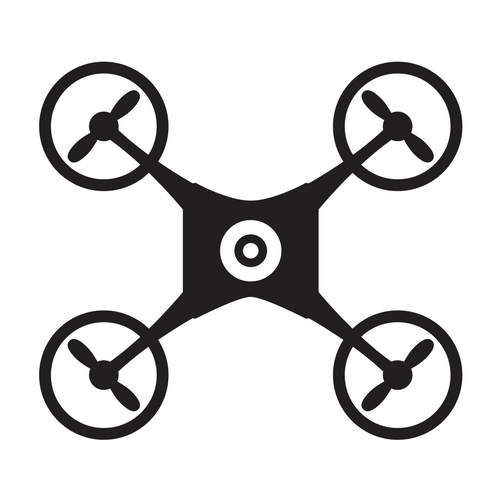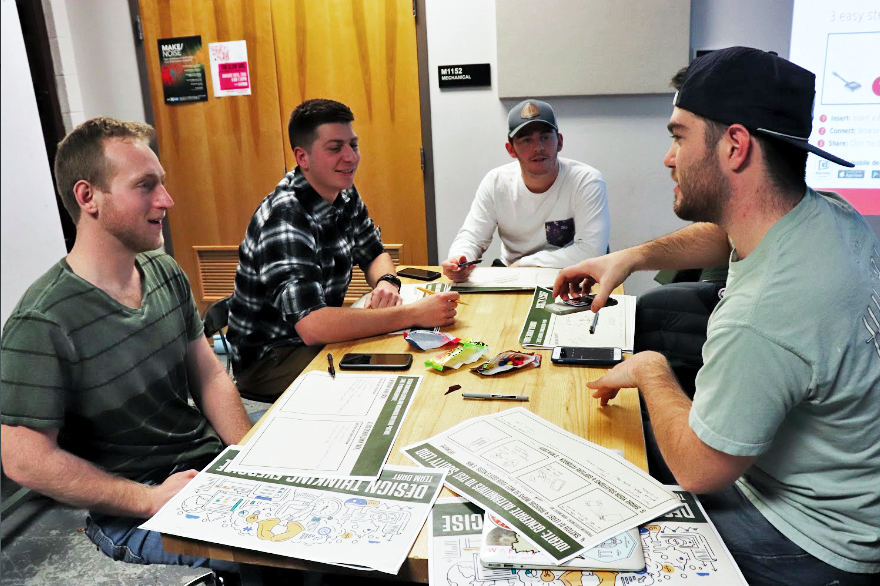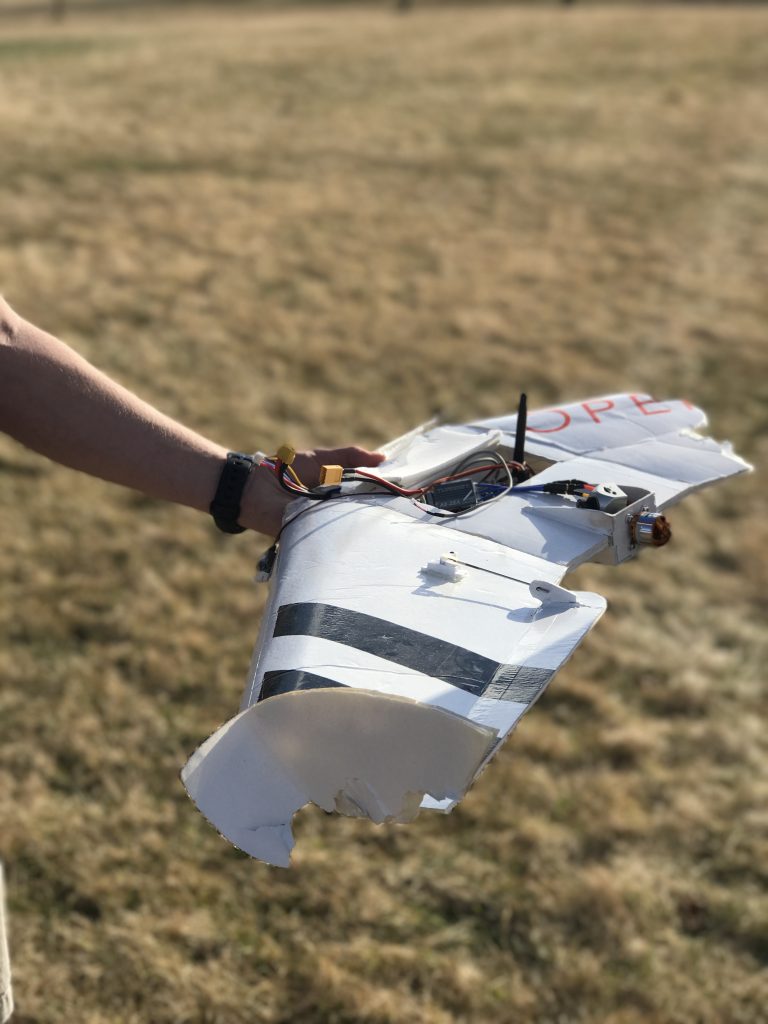Our team, Wasp Aviation, needed to come up with a way to safely tranquilize a large mammal like the Scimitar-Horned Oryx (read more about these here). The process was long, but ultimately we reached a potential solution to this issue that has taken many lives of both humans and animals.
Initial Design
For our initial design, we needed to find an adaption to the Smithsonian Conservation Biology Institute’s current tranquilizer-gun-mounted drone. We came up with the idea of using a second spotter drone, which would require an operator that guided the gunship and another operator, who would use a laser to guide where to shoot. This design would allow for wide coverage so that animals would stay in sight of at least one drone at all points of the process. It would also eliminate the need for a helicopter or a person to be too close to the animals. Because of the loud noise and relatively large size of drones, sometimes animals become alarmed when they get close–our design would be able to hit a moving target in the case that animals run from the unfamiliar object.
Experiments and Results
Prior to our involvement, The Smithsonian had been successful shooting a stationary target with their prototype. Because the dart lost speed from firing to impact proved that sophisticated tracking software would be necessary. Without this software, this discrepancy would cause misses and wouldn’t provide enough force for the dart to pierce the hide. The programming to get two drones to communicate along with a laser-guided dart system was out of reach with our current skills and timeframe, but we got as far as we could. Equipping the gun required a large drone, one that was hard to maneuver and also very loud, which could spook the animal once we got in range (5-15m). At first, we considered having the dart and a small drone directly impact the animal together without actually shooting the dart. Using 3D printed dart mounts with varying columns of different thicknesses, we were able to make the mounts break away with our desired forces so that the force of the dart on the animal wouldn’t be too minimal or too much.
After some deliberation and due to the results of our tests, the team decided on a fixed-wind model for our drone. Fixed-wing drones consist of a much simpler structure (so they’re cheaper, which addresses one of our main concerns), and they move in a constant forward motion which makes more sense for our process anyway. So, a fixed-wing drone with the dart attached to a breakaway mount could work well to deliver the tranquilizer. The fixed-wing model also proved to be quiet compared to other drones, could provide FP video feed, and could be guided into narrow target areas (i.e. could accurately hit a moving animal).
Final MVP
Our minimum viable product (MVP) we have been working on is a reasonably sized fixed-wing drone with a Pixhawk2 as the “brains” of the system. Along with the Pixhawk2, we also have and first person camera (FPV) and goggles (similar to a Virtual Reality pair) to give us the ability to fly the drone and see where it’s going. Using the Pixhawk2 will allow us to track the drone’s speed, height, and location. It also allows us to communicate with Mission Planner. Mission Planner is an application in which we can tweak values of the fixed-wing (calibration) and gives us the ability to set a flight plan so the drone can fly autonomously. Since the drone itself is bigger than we initially expected, we are mainly testing the ability to hit stationary and moving targets to prove that it is possible for one to control and hit a target through FPV. Along with the size, we decided to stick with the break-off system for our MVP as there will be more force added on impact due to the weight of the drone.
Future Directions
Our future goal is to have the resources to scale down the fixed-wing drone and essentially have the dart encased in the fixed wing. We want to do away the break-off system due to potential safety issues–there is a possibility of hitting something with the dart that we didn’t want to hit (this includes the ground). Having a locking mechanism and spring will ensure the dart stays inside the fixed wing until we are ready to release it. A good way to picture this is as a pen, where the dart can click out when it’s ready to use. The spring itself will act as a shock absorber. The final drone will be small enough that impact on the animal will cause just a small bruise. Reaching this goal would prevent injury to animals and humans alike as it would simplify the process and contain significantly less room for error.



